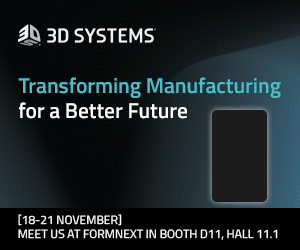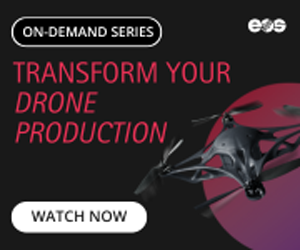 Swiss company Phonak, a provider of wireless communication solutions and hearing aids and owned by hearing aid producer Sonova, has come to our attention before – like when it turned to EnvisionTEC for its 3D printing capabilities, in turn disrupting the entire hearing aid industry. Phonak’s 3D printed hearing aids were also featured in a special 3D printed design exhibit at the Red Dot Design Museum in Germany last year. Just six months after the launch of its lithium-ion rechargeable hearing aid Audéo B-R, Phonak and Sonova have announced the launch of two new custom hearing solutions. Thanks to 3D printing and titanium material, a new addition to the Belong platform is here: the Virto B-Titanium. Another highly-anticipated Belong extension of the Bolero family’s behind-the-ear (BTE) hearing instruments was also announced: the lithium-ion rechargeable Bolero B-PR.
Swiss company Phonak, a provider of wireless communication solutions and hearing aids and owned by hearing aid producer Sonova, has come to our attention before – like when it turned to EnvisionTEC for its 3D printing capabilities, in turn disrupting the entire hearing aid industry. Phonak’s 3D printed hearing aids were also featured in a special 3D printed design exhibit at the Red Dot Design Museum in Germany last year. Just six months after the launch of its lithium-ion rechargeable hearing aid Audéo B-R, Phonak and Sonova have announced the launch of two new custom hearing solutions. Thanks to 3D printing and titanium material, a new addition to the Belong platform is here: the Virto B-Titanium. Another highly-anticipated Belong extension of the Bolero family’s behind-the-ear (BTE) hearing instruments was also announced: the lithium-ion rechargeable Bolero B-PR.
These are both set to be important additions to Phonak’s portfolio of super-discreet and rechargeable hearing aids, and Sonova is fully aware of the many benefits of 3D printing technology. 3D printing with titanium significantly reduces the shell of the Virto hearing aid, as the titanium shell is half as thin as acrylic shells. The tiny, discreet Virto is Phonak’s first custom device made with strong, lightweight titanium, and a great way to celebrate Phonak’s 70th anniversary.
According to Sonova, “Using state-of-the-art 3D printing technology to manufacture hearing instruments out of titanium at a large scale enables Sonova to fully leverage the benefits of this material and build smaller devices with thinner walls than ever before.”
Because of its reduced shell size, the Virto B-Titanium is actually the smallest custom ITE hearing instrument that Phonak has ever produced. It also features embedded electronic components that are 60% smaller than the Virto’s predecessor, and the overall size of the Virto B-Titanium has been reduced up to 26%. This means that the Virto B-Titanium could possibly fit patients who were not good candidates for previous IIC devices, due to smaller ear canals.
This small, discreet size make it a popular choice for first-time users of hearing aids. Even with its decreased size, the Virto B-Titanium also offers more venting, which makes it more comfortable, and also reduces occlusion with IICs. It is only available in one style – a black faceplate with a silver shell, but has M, P, and SP receivers available.
The Bolero B-PR built upon the Audéo B-R’s beneficial rechargeable solution: when fully charged, the Bolero can work for a full 24 hours, and also delivers 80 minutes of wireless streaming time. There are 9 color options for the Bolero B-PR, ranging from Velvet Black to to Graphite Gray and Champagne. According to a recent study, 9 out of 10 hearing aid wearers said that they were “very satisfied” with their Phonak rechargeable hearing aids’ battery life, and that 88% of hearing care professionals would recommend them to their colleagues. Both hearing aid wearers and hearing care professionals listed ease of use as the top advantage.
Thomas Lang, Senior Vice President of Phonak Marketing, said, “The release of our lithium-ion rechargeable Audéo B-R was one of the most successful product launches in Phonak history. That’s why we are so excited to announce the extension of this pioneering rechargeable technology to the Bolero B-PR only six months later while simultaneously introducing Virto B-Titanium – the tiniest custom instrument Phonak has ever produced. More than ever, these new products reinforce Phonak’s commitment to fast-paced innovation, ease of use, and improved quality of life.”
To create these custom hearing aids, silicone impressions of the wearer’s ear canal are scanned into the computer through laser technology, and any other processing is digitally completed on-screen. The completed file of the 3D hearing aid shell structure is stored in a central database, and transmitted to the 3D printers at Sonova’s production site. Sonova mostly relies on DLP printers, though the Virto B-Titanium is 3D printed using SLM technology. Even though Sonova 3D prints hundreds of thousands of hearing aids each year, every one is tailor-made for each individual wearer.
Both the Virto B-Titanium, and all Bolero models, including B-M, B-P, B-SP, and the new rechargeable B-PR, run on an updated version of Phonak’s operating system, AutoSense OS. Every 0.4 seconds, AutoSense automatically analyzes the sounds it hears and, drawing on multiple features, blends them together in order to make over 200 distinct settings that can match sound environments around the wearer, all without manual adjustments.
Two studies completed at the Phonak Audiology Research Center, “Performance and Preference of an Automatic Hearing Aid System in Real-World Listening Environments” and “Comparing objective and subjective outcomes of automatic classification systems across manufacturers,” confirmed that the AutoSense OS “delivered better speech understanding over patients’ manual selection and unmatched hearing performance in everyday listening situations over two leading competitors.”
Both the Virto B-Titanium, and the new Bolero B family, including the rechargeable Bolero B-PR, are currently available in the US, and will be coming to most European countries in March. To see how Phonak built the 50% thinner shell of the Virto B-Titanium, take a look at the following video:
https://youtu.be/7ecc9OcrJAc
Discuss in the Phonak forum at 3DPB.com.
[Images: Phonak]
Subscribe to Our Email Newsletter
Stay up-to-date on all the latest news from the 3D printing industry and receive information and offers from third party vendors.
Print Services
Upload your 3D Models and get them printed quickly and efficiently.
You May Also Like
An Operation Warp Speed for Manufacturing: a Recommendation for the 3D Printing Industry in 2026
There is no looming shortage of manufacturing workers in the United States: that’s a misconception. Rather, there’s a shortage that’s already entirely present, one which increasingly threatens to turn into...
From Spare Parts to Strategic Advantage: How AM Is Reshaping Defense Readiness
When I talk with defense customers and partners about additive manufacturing, the conversation rarely starts with, “What can we print?” It usually starts with something like, “We can’t get this...
3D Printing Companies Win Big in LIFT’s Advanced Materials Challenge
Last year, Detroit’s LIFT, the Manufacturing Innovation Institute (MII) that specializes in lightweighting, announced the Advanced Materials Challenge (AMC) Program, a project call seeking advanced materials solutions for components relevant...
Export-Import Bank of U.S. Loans $27.4M to 6K Additive to Boost U.S. Metal Powder Output
Critical minerals have overtaken news cycles all year, with U.S. tariffs and Chinese export curbs disrupting supply chains and driving new waves of investment. As recently as last week, at...


































